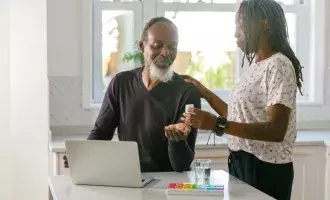When you picture the communities of the future what do you see?
We already know that they’re likely to be quieter, emission-free zones, as we head towards fully electric travel, but what role will other technology, such as 5G, play? And how will the shift to more flexible and remote working change where, and how, we want to live?
It’s exciting to see local authorities putting greener technology at the heart of new building projects to create healthier communities for residents and the environment. Take the Lennox Point development in Portsmouth (formerly named Tipner West), for example. In my recent conversation with Natascha McIntyre Hall, Assistant Director Strategic Developments at Portsmouth City Council, she explained how the proposed development will create 3,500 homes and provide a million square feet for marine and maritime employment. However, its unique factor is that it will eliminate car travel. Natascha said: “Tipner West provides an extra 2.2 kilometres of open waterfront that just doesn’t exist at the moment. One of the things we’ve done is step all the residential units back so that everybody has access to the whole waterfront. Residents can walk out of their front door into an engaging community.”
Natascha knows that building new homes on their own won’t create a sense of community: “What you need are areas where people can have joint experiences. Traditionally quite a lot of places that are one hundred percent residential fail to create genuine communities with different uses, because in order to create a community, you have to be able to bring like-minded people together.”
Fortunately, technology now makes it easier for people to have their say on the societies they want to see. Feedback is almost instantaneous, so local authorities and central government are being held to account much more. People can communicate more quickly so they expect things to happen more quickly, but we still need planning and policymaking to change the societies of the future.
Natascha knows from experience that huge development projects take time. She told me: “On the one hand I love change and I would love to be able to incorporate it into designs more quickly, but on the other hand I am a city and large-scale regeneration development specialist and the one thing I know is that we cannot do things quickly. I think that can be both a blessing and a curse. But the reality is we are showing up, we are visible, and we will continue to answer questions. We are being as transparent as we can and providing as much information as we can.”
Building healthier communities through the intelligent use of data
Societies should always be centred on the needs of people; helping them go about their daily lives and contributing to their health and wellbeing.
If we take the positives out of the coronavirus pandemic, I think it has started to glue much of society back together and people are understanding the importance of protecting their wellbeing and the environment. They have had the opportunity to take a walk and find a river down the road they didn’t know was there, because normally they just didn’t have the time. People will want to hold onto that.
When the pandemic ends, I imagine at least 40% of people will still work from home. Now that 4G and 5G technology are reaching more rural communities, we might see the resurgence of villages and industries popping up around them, because people won’t need to travel into London, for instance. In the future this invisible infrastructure will bring many more benefits in terms of the environment, transportation and the local economy, and that’s going to affect how we build future societies. We’re already seeing drones and autonomous vehicles being trialled. It sounds sci-fi but I think it will become the norm. More car-free zones, fewer delivery vehicles and fewer trips to the office will be good for the environment and our health.
Using data to drive intelligent outcomes for citizens
To build greener, healthier and safer communities we need data to inform planning and policymaking. Natascha told me she is keen to measure the health benefits that Lennox Point brings: “Eliminating cars, we believe, will benefit health. So we would like to be able take measurements from the beginning to understand whether it works. Are there fewer GP visits? Are there fewer people with Type 2 diabetes? We would like to be able to understand what the air quality is like down to how many minutes children are playing outside.”
I’m optimistic that with all the data points we can collect now - from air quality, traffic density, wellness, truancy rates, and even down to the different ailments in the NHS hospitals - we can drive policies to implement change. But the one thing I think we have a problem with is the intelligent use of data. I’ve seen many great digital transformation projects where we have the ability to ingest and store data, but I think we have a journey to go yet to really drive intelligent outcomes and use that data properly to create the best outcomes for citizens. It’s shocking to me that currently NHS data isn’t able to be shared with social services, education and policing. We know that if we gather data and apply the intelligence to that data, we will start to see patterns. We could then see how a particular factor affects the NHS, wellbeing and even crime.
Going forward, I believe it’s really important that we have what I call the ‘public data exchange’ from every community available. Because without that we’re not going to be able to create the smarter, more connected communities we want to see.

Del Alibocus
Head of IoT, Capita Consulting
Del brings significant, international IOT and software platform experience to Capita Consulting, as well as a deep understanding of data solutions and how to commercialise them effectively. Before stepping into this role, Del was head of IOT at Telefonica UK, and previously built and ran a successful IOT consultancy.







